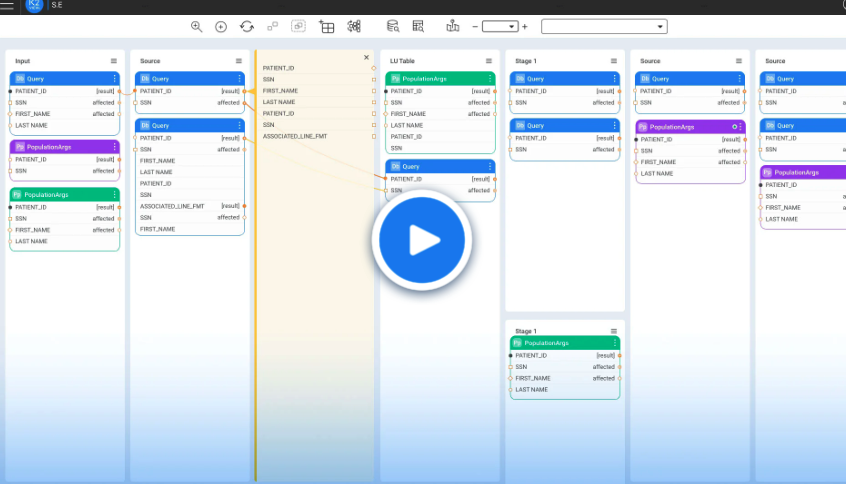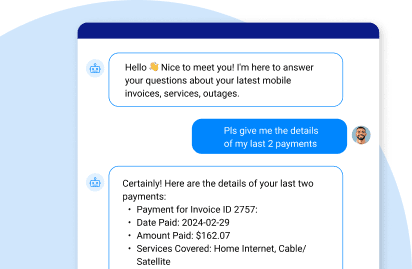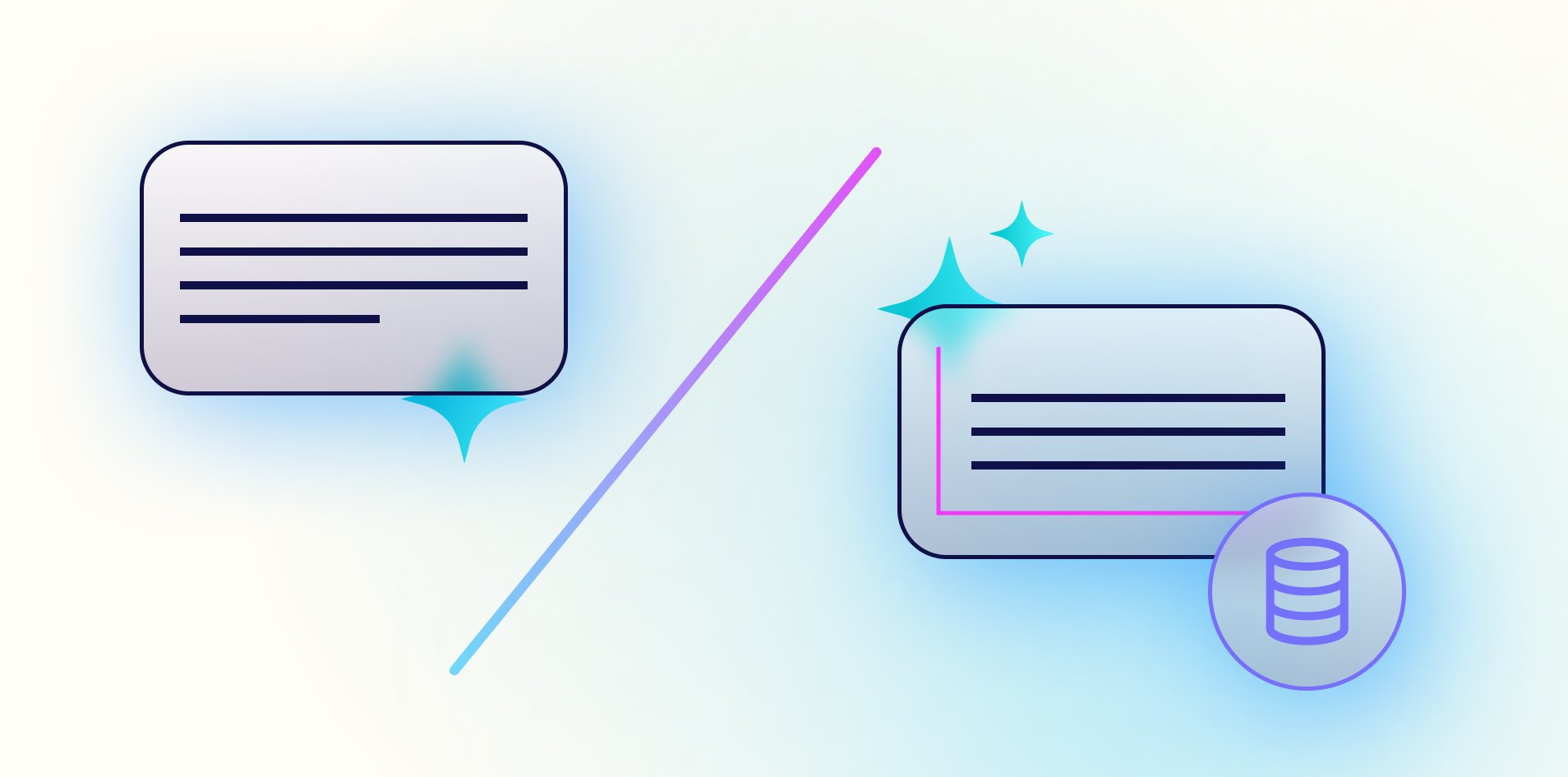While a conversational AI chatbot is designed for simple conversations, virtual assistants have a broader feature set enabling more complex interactions.
Why compare chatbot to assistant in the 1st place
Although terms like conversational AI chatbot and AI virtual assistant often get lumped together, each serves different purposes and comes with its own strengths and weaknesses.
But who really cares? YOU should, and here’s why…
In organizations, anyone involved in AI customer experience, business operations, or digital innovation must understand the differences between chatbots and assistants due to their affect on efficiency, customer satisfaction, and cost savings. For example:
- Businesses and customer service teams know that both chatbots and assistants can significantly improve customer service efficiency, reduce operational costs, and provide 24/7 support – enhancing customer satisfaction and retention. Choosing the right technology impacts business outcomes like AI personalization, engagement, and scalability.
- Customers and end-users benefit from quicker and more reliable service. Conversational AI reduces wait times and frustration by providing instant responses and proactive assistance, improving overall experience.
- Technology and product developers must make a clear distinction between the two approaches to choose the right solution for a particular workload – such as automating simple repetitive tasks with chatbots, or enabling complex, multi-step interactions with assistants.
- Businesses undergoing digital transformation aim to future-proof themselves technologically by integrating both conversational AI chatbots and virtual assistants to meet customer demand, and stay competitive with the market.
In this blog, we’ll take a look at what sets conversational AI chatbots apart from assistants, the challenges each is meant to solve, and how they both fit into the larger picture of making better use of enterprise data, especially in terms of grounding Large Language Models (LLMs). 
Conversational AI chatbot defined
A conversational AI chatbot is primarily designed to simulate human conversation, often handling striaghtforward tasks like answering questions, supporting customers, or guiding users through simple workflows. Whether rule-based using predefined scripts, or AI-powered using Natural Language Processing (NLP) and Machine Learning (ML), its main function is to interact with users in a conversational manner, usually within a limited scope.
While an AI chatbot is far more adaptable than its rule-based counterpart, its learning capabilities are often limited to improving performance within a specific domain. For example, it might learn new ways to answer the same question or better understand user intent by using generative AI (GenAI) frameworks like Retrieval-Augmented Generation (RAG) – which injects fresh enterprise data into Large Language Models (LLMs) for greater accuracy and relevance in generating responses – and the Model Context Protocol (MCP) for connecting all data sources through one MCP server using a data product platform.
However, that focus might make them less adaptable to handling new or unexpected situations outside their pre-programmed scope. In the realm of Artificial Intelligence (AI), a chatbot can be likened to an LLM single-action agent, which is designed to handle a single, well-defined task per interaction, rather than managing a complex series of sub-tasks.
Virtual assistant defined
Virtual assistants (also known as AI assistants or digital assistants) can perform a broader range of tasks, such as managing schedules, sending reminders, retrieving information, and even controlling smart devices. They leverage sophisticated AI, including Natural Language Understanding (NLU) and deep learning, to interpret complex commands and handle multi-step processes.
They can also draw conclusions from diverse datasets and personalize responses based on user context. Think of the evolution from conversational AI chatbot to virtual assistants as the move from reactive to proactive problem solving. To illistrate its multi-tasking abilities, think of an assistant in the context of a multi-agent LLM, in which individual LLM agents, each with its own specialized area of expertise, join forces to complete tasks. Each agent deals with a different aspect of the job, while constantly in sync with the others, to make a more informed collective decision.
You’re no doubt already familiar with assistants like Google Assistant, Amazon’s Alexa, and Apple’s Siri. Within an organization, assistants might aggregate data from various enterprise systems, book meetings, or perform multi-step actions based on conversational requests. Their flexibility comes from both advanced NLP and ML, as well as integration with both unstructured and RAG structured data and a broad range of applications.
Complexity and scope are the core distinctions
The most fundamental difference between a conversational AI chatbots and assistatants lies in the complexity of tasks they are designed to handle and the scope of their operations.
Conversational AI chatbots were traditionally built to address more narrow and specific tasks – such as guiding you through a return process, answering a basic question, or scheduling an appointment. Its strength lies in its ability to efficiently handle a high volume of predefined simple interactions. Excelling in predictable conversation flows, it responds quickly to common questions or in executing simple commands.
Virtual assistants, on the other haned, come equipped with a broader range of functionalities to manage complex conversations and tasks. Designed for general purpose use, they’re capable of understanding context, remembering user preferences, and performing a variety of different jobs across different applications and platforms. They typically understand natural language better than chatbots, allowing for more nuanced and flexible interactions.
They can further integrate with external apps like calendars, email, smart home devices, and other third-party services to provide more comprehensive support – helping users accomplish a wider variety of tasks, by acting as a central hub for information and action.
Conversational AI chatbot vs assistants comparison
Below is a table summarizing the key features of an AI chatbot for customer service compared to assistants:
|
Feature |
Conversational AI chatbot |
Assistants |
|
Purpose |
Simulate conversation, handle specific tasks |
Perform broad, multi-step tasks, manage workflows |
|
Sample use cases |
|
|
|
Complexity |
Handles simple to moderately complex queries |
Handles complex, dynamic, multi-step interactions |
|
Learning capability |
Reactive, learning a single domain very well |
Proactive, continuously adapting and evolving |
|
User interface |
Text/chat-based, with web/app integration |
Voice and text, multi-device support |
|
Examples |
Website support bot, FAQ bot |
Siri, Alexa, Google Assistant |
|
Underlying technology and intelligence |
Keyword spotting, predefined scripting, with some ML and deep learning |
Advanced ML and deep learning, with specialized algorithms for context tracking, personalization, and proactive engagement |
|
Contextual understanding and memory |
Limited contextual memory, with each interaction treated as an isolated incident |
Stronger contextual awareness and memory by remembering previous interactions, user preferences, and information from other apps |
Better AI chatbots and assistants with K2view
K2view believes that making chatbots and virtual assistants smarter and safer starts with solving the challenge of uniting fragmented, multi-source enterprise data. Our AI chatbot for customer service solution simplifies secure, real-time data access for both chatbots and assistants – whether they’re using Table-Augmented Generation (TAG), RAG tools, or any other grounding method for LLMs.
With K2view, your conversational AI chatbots and assistants will always have access to the freshest, privacy-protected business entity (e.g., customer) data. And you’ll be able to build contextual, agentic RAG experiences that reduce AI hallucinations while ensuring that no sensitive information is ever leaked.
Discover how the K2view AI chatbot for customer service
solution enhances all your conversational AI applications.













